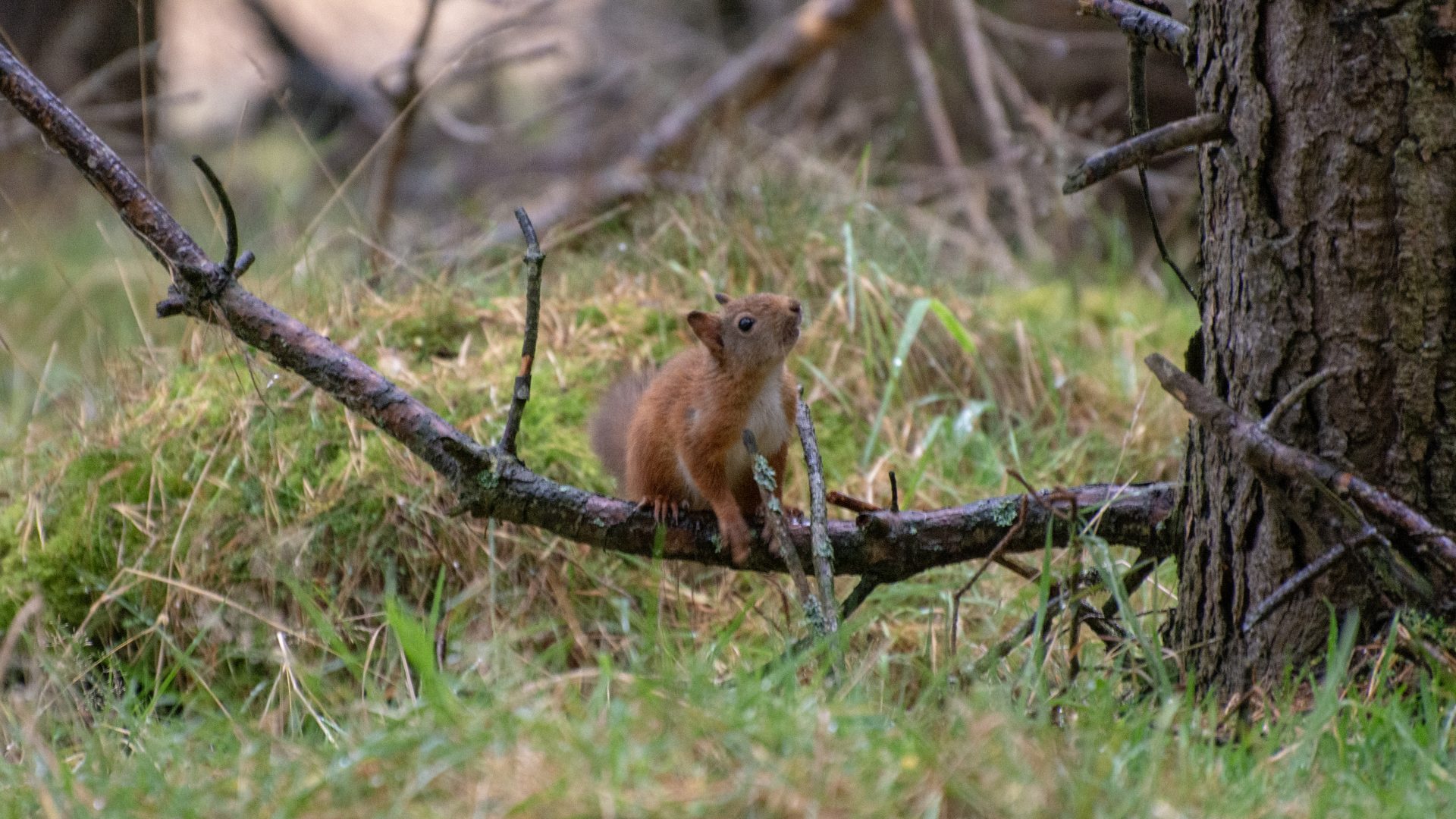
Saving the red squirrel
Published: 21 June 2018
My name is Bob Cartwright and I’m a National Park addict. I grew up hiking in the North York Moors and Yorkshire Dales. In 1976 I wrote my thesis on National Parks and Access to the Countryside and subsequently enjoyed thirty five privileged years working for two National Park Authorities.
These days I get still get a thrill from our protected landscapes but recently I’ve been mainlining on Red Squirrels. I am deputy chair of the Westmorland Red Squirrels charity and sit on the Executive Committee of the UK Squirrel Accord as an advocate for red squirrel volunteers.
The authorities’ record, National Park Authorities and others, of protecting and celebrating this iconic native species in the National Parks of England and Wales is not a good one, though Scotland does it rather better. Neither has been their contribution to the welfare of our woodlands in controlling, or promoting control of the non-native invasive grey squirrel.
As we welcome Julian Glover’s forthcoming review of National Parks and Areas of Outstanding Natural Beauty, the conclusions of an earlier review, Ron Edwards’ Fit for the Future 1991 report, are worth recalling. It found that nature conservation should be given higher priority and that wildlife conservation should become a primary objective. Indeed this recommendation was duly enshrined in the revised statutory National Park purposes of the Environment Act 1995. But have we lived up to expectations? Have we made a difference?
In the 1940s, when our founding National Park legislation was being shaped, red squirrels could be found in almost every area that subsequently became a designated landscape. Now, the red population is thought to be no higher than 120,000, with only about 15,000 in England.
The grey squirrel (Sciurus carolinensis) was introduced to the UK from North America in 1876 and its population has grown rapidly. Today, there could be as many as 3 million greys and this number continues to grow.
They need controlling because they cause major economic and environmental damage to our woodlands. Grey squirrels strip bark. When they strip a complete ring of bark, the tree will die. Any damage to the bark can evidently also expose trees to other diseases, which are increasingly prevalent due to climate change.
Grey squirrel colonisation has significant consequences for our native red squirrels, particularly through the spread of squirrelpox virus. It can take only one grey squirrel to introduce this virus to a local population of red squirrels, which can spread throughout the reds with devastating effect.
National Park authorities and their partner organisations can and should do so much more, particularly if they engage with the thousands of red squirrel volunteers and landowners. They can offer leadership and provide support. They need to move from warm words and really commit to effective and National Park-wide control of grey squirrels and the protection of red squirrels. They could make a significant difference by:
- Ensuring the public understand the importance of this work, through their interpretation programmes, information centres and guided walks.
- Leading by example by controlling greys in their own woodlands and managing red squirrel habitat.
- Championing with Government the case for incentives to landowners to control greys and restore red
- Supporting the hard-pressed volunteer groups who, in the north of England for example, currently deliver more than 80 per cent of all squirrel management.
- Offering practical support and advice on grey squirrel management.
- Advocating long term commitment to practical action and scientific research.
- Ensuring management practice throughout all National Parks is in line with national guidance, developing and testing innovative control methods, and publicising case studies that highlight exemplary management, coordination and communication.
Examples of good practice that all National Parks could adopt are not hard to find. In Loch Lomond and the Trossachs they’ve created this Wild Challenge Long Term Vision 2040:
Sightings of red squirrels will have increased and people visiting the National Park will be able to readily see them. Landowners and local communities will take pride in the return of red squirrels to their area and be encouraged to maintain this. Red squirrels within the National Park will be protected from further re-colonisation of grey squirrels through a network of community led groups and landowners continuing responsible grey squirrel trapping effort in areas that are sensitive to grey squirrel distribution from the central belt. Healthy woodland habitat networks will provide natural distribution pathways and encourage red squirrels to develop populations throughout the Park.
The Yorkshire Dales have set up red squirrel trail and a donation scheme that guarantees that 100 per cent of the money given will go to red squirrel conservation in the National Park. In the Lake District, where I operate, the National Park licenses our charity to control greys in its woodlands. In the Cairngorms, a refuge for native red squirrels, they’re doing so well that they’re prepared to export some to other parts of Scotland.
Couldn’t every UK National Park, if they were to adopt a partnership approach to woodland habitat and species management, make a compelling case for red squirrel reintroductions? And shouldn’t all National Parks adapt and adopt a version of Loch Lomond and the Trossachs’ vision? We all talk about landscape scale management. What better way to protect our woodlands and their myriad habitats and species than adopt the red squirrel as our poster boy? Now that really would be a ‘fix’.
